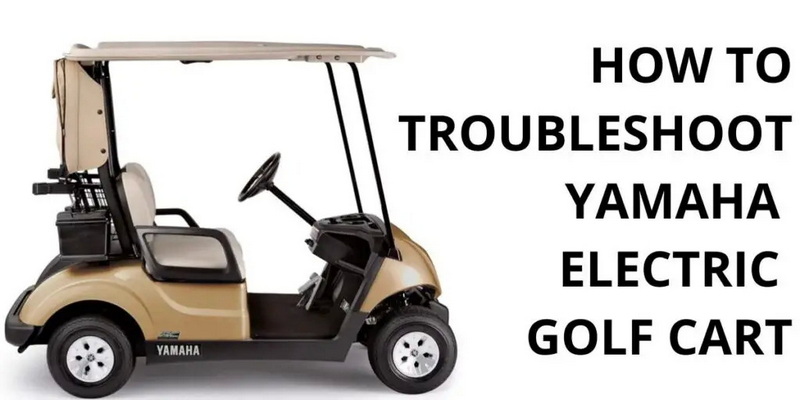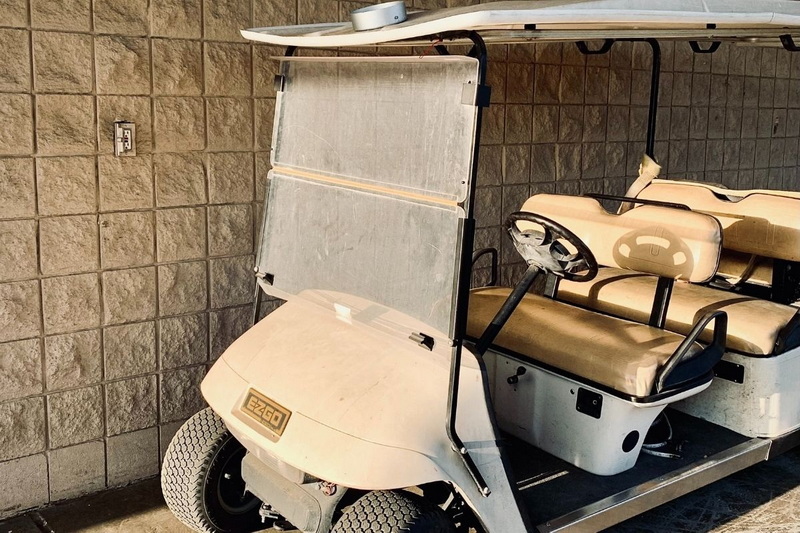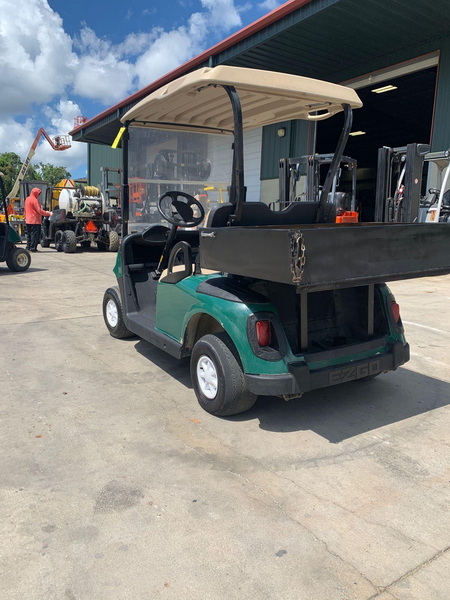Content Menu
● Understanding Your Electric Golf Cart
● Common Issues with Electric Golf Carts
>> Battery Problems
>> Charger Issues
>> Motor Problems
>> Controller Issues
>> Solenoid Issues
>> Wiring Issues
● Preventative Maintenance Tips
● Advanced Troubleshooting Techniques
● Conclusion
● Frequently Asked Questions
>> 1. What should I do if my electric golf cart won't start?
>> 2. How often should I charge my electric golf cart batteries?
>> 3. What are the signs of a failing golf cart battery?
>> 4. Can I use a regular car charger for my golf cart?
>> 5. How can I extend the life of my electric golf cart batteries?
Electric golf carts are a popular choice for golfers and recreational users alike, providing a convenient and eco-friendly way to navigate golf courses and other terrains. However, like any vehicle, they can encounter issues that require troubleshooting. This article will guide you through the common problems associated with electric golf carts, how to diagnose them, and the steps you can take to resolve these issues effectively.

Understanding Your Electric Golf Cart
Before diving into troubleshooting, it's essential to understand the basic components of an electric golf cart. Most electric golf carts consist of the following parts:
- Batteries: The power source for the cart, typically lead-acid or lithium-ion batteries.
- Charger: Used to recharge the batteries.
- Motor: Converts electrical energy into mechanical energy to drive the cart.
- Controller: Regulates the power from the batteries to the motor.
- Solenoid: Acts as a switch to control the flow of electricity to the motor.
- Wiring: Connects all components and allows for the flow of electricity.
Common Issues with Electric Golf Carts
Battery Problems
One of the most common issues with electric golf carts is battery failure. Symptoms of battery problems include:
- The cart does not start.
- The cart runs slowly or loses power quickly.
- The batteries show signs of corrosion or leakage.
Troubleshooting Steps:
- Check Battery Charge: Use a multimeter to measure the voltage of each battery. A fully charged battery should read around 6-8 volts for lead-acid batteries.
- Inspect Connections: Ensure that all battery connections are clean and tight. Corroded terminals can prevent proper charging and discharging.
- Test Individual Batteries: If one battery is significantly lower in voltage than the others, it may need to be replaced.
Charger Issues
If the cart is not charging properly, the charger may be at fault. Signs of charger issues include:
- The charger does not turn on.
- The charger shows a fault indicator light.
- The batteries do not charge after several hours.
Troubleshooting Steps:
- Check Power Source: Ensure the charger is plugged into a working outlet.
- Inspect Charger Cables: Look for any frayed or damaged cables that could interrupt the charging process.
- Test the Charger: If possible, test the charger with another set of batteries to determine if it is functioning correctly.
Motor Problems
Motor issues can manifest as a lack of power or unusual noises when the cart is in operation. Common symptoms include:
- The cart does not move when the accelerator is pressed.
- The motor makes a grinding or whining noise.
Troubleshooting Steps:
- Listen for Sounds: If the motor is silent, it may not be receiving power. If it makes unusual noises, it may be damaged.
- Check Connections: Ensure that all wiring to the motor is secure and free from corrosion.
- Test the Motor: If you have access to a multimeter, check the motor's resistance. A reading outside the normal range may indicate a problem.

Controller Issues
The controller is responsible for regulating the power to the motor. If the controller fails, the cart may not operate correctly. Symptoms of controller issues include:
- The cart jerks or hesitates when accelerating.
- The cart does not respond to the accelerator pedal.
Troubleshooting Steps:
- Inspect Wiring: Check for loose or damaged wires connected to the controller.
- Test the Controller: If you have the technical expertise, you can test the controller with a multimeter to ensure it is functioning correctly.
- Replace if Necessary: If the controller is faulty, it will need to be replaced.
Solenoid Issues
The solenoid acts as a switch that allows power to flow to the motor. If the solenoid is faulty, the cart may not start. Symptoms include:
- A clicking sound when the accelerator is pressed.
- The cart does not move at all.
Troubleshooting Steps:
- Listen for Clicks: If you hear a click but the cart does not move, the solenoid may be faulty.
- Check Connections: Ensure that all connections to the solenoid are secure.
- Test the Solenoid: Use a multimeter to check for continuity. If there is no continuity, the solenoid will need to be replaced.
Wiring Issues
Wiring problems can cause a variety of issues in electric golf carts. Symptoms include:
- The cart behaves erratically.
- Lights or accessories do not work.
Troubleshooting Steps:
- Inspect Wiring: Look for frayed or damaged wires throughout the cart.
- Check Connections: Ensure all connections are tight and free from corrosion.
- Test for Shorts: Use a multimeter to check for shorts in the wiring.

Preventative Maintenance Tips
To avoid issues with your electric golf cart, regular maintenance is essential. Here are some tips to keep your cart in top condition:
- Regularly Charge Batteries: Always charge your batteries after use to prolong their lifespan. This practice helps maintain the health of the batteries and ensures they are ready for your next outing.
- Clean Battery Terminals: Keep battery terminals clean and free from corrosion. A mixture of baking soda and water can effectively clean corroded terminals.
- Inspect Cables and Connectors: Regularly check all cables and connectors for wear and tear. Replace any damaged components immediately to prevent further issues.
- Store Properly: If you're not using the cart for an extended period, store it in a cool, dry place and disconnect the batteries. This helps prevent battery drain and damage.
- Check Tire Pressure: Ensure that the tires are properly inflated. Low tire pressure can affect the cart's performance and battery life.
Advanced Troubleshooting Techniques
If basic troubleshooting does not resolve the issue, you may need to employ more advanced techniques. Here are some additional steps to consider:
- Use Diagnostic Tools: Many modern electric golf carts come equipped with diagnostic ports. Using a diagnostic tool can help identify specific error codes that indicate where the problem lies.
- Consult the Owner's Manual: The owner's manual often contains troubleshooting sections specific to your model. Refer to it for guidance on common issues and solutions.
- Seek Professional Help: If you are unable to diagnose or fix the problem, it may be time to consult a professional technician. They have the expertise and tools necessary to address complex issues.
Conclusion
Troubleshooting an electric golf cart can seem daunting, but by following the steps outlined in this article, you can diagnose and resolve many common issues. Regular maintenance and attention to detail will help ensure your cart remains in good working order for years to come. Remember, if you encounter a problem that you cannot resolve, it's always best to consult a professional technician.

Frequently Asked Questions
1. What should I do if my electric golf cart won't start?
If your electric golf cart won't start, first check the battery charge and connections. Ensure the batteries are fully charged and that all connections are clean and secure. If the batteries are fine, inspect the solenoid and motor for any issues.
2. How often should I charge my electric golf cart batteries?
You should charge your electric golf cart batteries after every use. This practice helps maintain battery health and ensures they are ready for your next outing. If you use the cart infrequently, charge the batteries at least once a month.
3. What are the signs of a failing golf cart battery?
Signs of a failing golf cart battery include a significant drop in voltage, slow performance, and visible corrosion on the terminals. If you notice these symptoms, it may be time to test or replace the batteries.
4. Can I use a regular car charger for my golf cart?
No, you should not use a regular car charger for your golf cart. Golf carts require specific chargers designed for their battery type. Using the wrong charger can damage the batteries and lead to safety hazards.
5. How can I extend the life of my electric golf cart batteries?
To extend the life of your electric golf cart batteries, regularly charge them, keep the terminals clean, avoid deep discharges, and store them in a cool, dry place when not in use. Following these practices will help maintain battery health and performance.











































